
As the director of an interactive art and nature space, I’ve included climate change as a topic in many shows and programs over the years. But until recently, I had convinced myself that focusing an entire exhibition on climate change would be a mistake. I thought, “It’s too big, too depressing, and no one will want to come see it.” Yet here I am, curating an exhibition about our climate’s future, co-curating two other climate-related shows, and co-leading Peabody Essex Museum’s new Climate + Environment Initiative.
So, what happened? It started with a sudden, profound realization that I could no longer not do an exhibit on the climate crisis—and, more specifically, on climate action. An important first step was to transform my own feelings of powerlessness and overwhelm into positivity and hope. Talking about what’s possible, in the face of fear, helped me spur the broader initiative here at PEM. I’m writing this to empower colleagues at other museums to start (or continue) having real and difficult conversations within their own institutions about how to be in action to help create a different climate future.
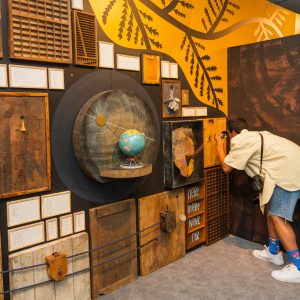
Long before the launch of our C+E Initiative, PEM had been working internally to be more green and sustainable—including converting to more energy-efficient lighting systems and implementing a more robust recycling and waste-stream reduction program. This was a good start, but going forward, consideration of climate-friendly and sustainable options will be more integrated into PEM’s overall review process. It was affirming to hear our incoming Executive Director, Lynda Roscoe Hartigan, bring up climate change as a societal priority at a recent virtual all-staff meeting.

The museum’s C+E Initiative is meant to be an iterative, multifaceted, and adaptive response to the climate and environment crisis. Visualize a wheel with many different moving spokes that point both outward (to exhibitions, programs, and community initiatives) and inward (to internally driven projects, activities, and policies). One of the “inward” spokes is the establishment of a brand new “C+E Staff Ideators” team, comprised of about a dozen interested staff from across the organization. We will meet monthly to generate ideas, discuss concerns, and propose opportunities for consideration at the executive level.
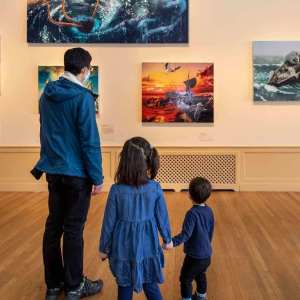
The primary “outward-facing” spoke of our initiative is a series of diverse exhibitions and installations that look at the environment and climate from a range of perspectives, topics, and time periods. The first was a contemporary artist’s foray into the impact of maritime trade on the environment in Alexis Rockman: Shipwrecks, which closed May 31, 2021.
Next will be the North American premiere of an immersive experience of natural soundscapes in The Great Animal Orchestra: Bernie Krause and United Visual Artists (Nov. 20, 2021 – May 22, 2022). Then, in February 2022, PEM will launch the “anchor” show of the C+E Initiative, Climate Action: Inspiring Change (Feb. 19, 2022 – Summer 2023), an interactive, family friendly, Art & Nature Center exhibition created in partnership with The Climate Museum. This interdisciplinary, multi-artist exhibition will emphasize known solutions and opportunities, with the intention of fostering hope, positivity, and urgent action on climate change. PEM will also be the coordinating institution for a touring show opening next March that offers a unique and memorable take on the climate and environment crisis. Down to the Bone: Edward Koren and Stephen Gorman (March 12 – September 5, 2022) juxtaposes Gorman’s haunting photos of polar bears with New Yorker artist Koren’s imagined scenes of bemused human-like creatures in the Anthropocene. The final exhibition of the current C+E series will be Konstantin Dimopoulos’ The Blue Trees (April 2022 – Winter 2022/23). This “call to action” by the artist will be created outdoors, with public participation, on PEM’s campus.
In addition to exhibitions, PEM has started offering related programming for adults and families, including a three-part virtual “COVID-19 and Climate” series that explored what we’ve learned from the pandemic that might help us tackle climate change and elevate environmental justice. One key takeaway? “Flattening the curve” of climate change will make a big difference. The museum’s ongoing series of virtual Drop-In Art Activities has included an array of environment-themed projects, designed to raise awareness and appreciation for nature, particularly in young makers.
For April school vacation week, we invited two artist educators, Wes Sam-Bruce and Armando Silva, to create Earth-themed activities and art experiences for families to explore different ways of connecting to and celebrating the Earth. Future programming will feature youth voices, performing artists and scientists, as well as collaborations with community organizations and initiatives, such as Salem Sound Coastwatch and Resilient Together (Salem and neighboring Beverly’s climate action plan), among others.
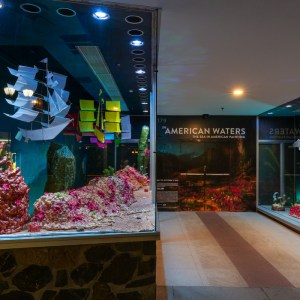
Another outward-facing spoke of this initiative is emerging in our PEM Shop. Our Director of Merchandising, Victor Oliveira, is actively sourcing sustainable items and product lines—including clothing. He is also raising visibility about sustainability in our shop and across the museum field by presenting at conferences, including the recent Cultural Enterprises Conference.
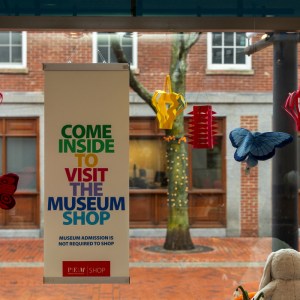
Engagement with our local community is a third important outward-facing spoke of the initiative. Salem’s historic nature and coastal location makes it particularly vulnerable to escalating storm events and rising sea levels. The museum is helping host the city’s first annual climate change conference this September. This year’s hybrid event will focus on what’s anticipated for Salem and what’s being done locally to both mitigate impacts and build resilience—particularly with regards to the community’s many historic properties.
I am deeply grateful for representatives from local and regional organizations who have stepped up to serve as invaluable advisors and collaborators for the planning of the Climate Action exhibition and the C+E Initiative overall. They have brought diverse expertise and cultural backgrounds, along with a shared commitment to a stable climate and environmentally just future for all. I could not be undertaking these projects without them or my devoted and talented colleagues at PEM who are making this initiative happen.
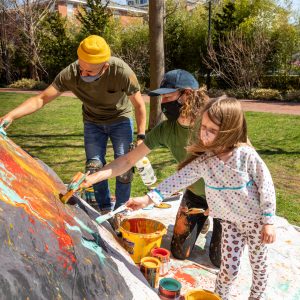
I take heart in knowing that there is a growing community of people taking action, including colleagues across the museum field joining together to share ideas about environmentally sustainable practices and actions as members of AAM’s volunteer Environment and Climate Network. Museums are uniquely situated in the cultural sector to engage with the public and our communities. As part of the messaging, we need to also look at what we are doing internally as institutions to make a positive difference. By working collectively and with urgency we can significantly slow climate change and mitigate the worst impacts. Through our museum’s Climate + Environment Initiative, we hope to inspire more people to get involved—and so can you!

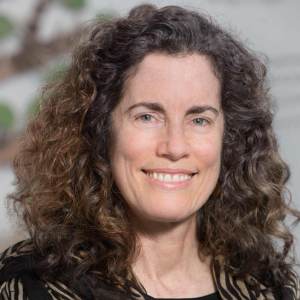





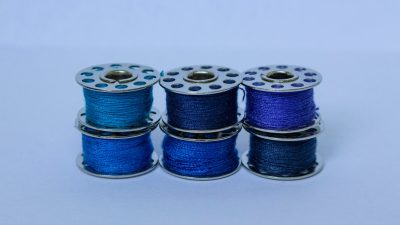

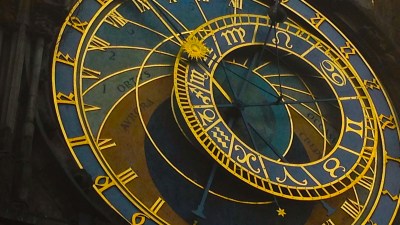
Comments